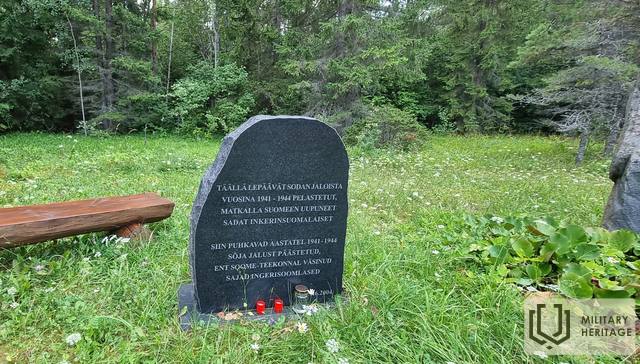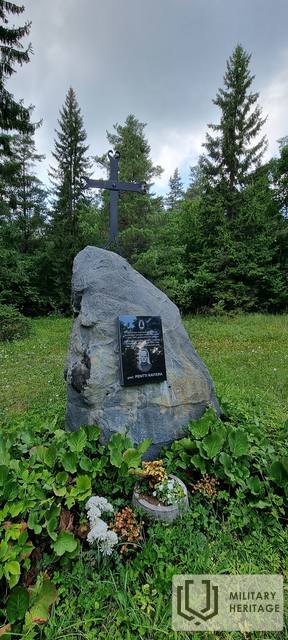Ingrian Finns Memorial Site in Põllküla
Memorial site


 42
42



When approaching from Kersalu, before the Põllküla railway crossing, the forest road heads to the right. Along this road, about 200 m away, in a forest clearing, there is a memorial site.
Between 1942 and 1944, over 63,000 Ingrian-Finnish war refugees were evacuated from the Soviet Union to Finland. Most of them were temporarily placed in quarantine and refugee camps located in Põllküla, as well as in Klooga and Paldiski. The evacuees were transferred to Finland via the port of Paldiski.
It is estimated that several tens of thousands of people passed through the Põllküla camp alone. People stayed in the camp for a few weeks to several months. They lived in buildings built for the Red Army in 1939-1940. Living conditions were difficult and they suffered from food shortages, cold, humidity and various infectious diseases. As a result, the mortality rate in the camp was high. It is estimated that about a thousand Ingrian Finns lost their lives in the camp.
The armistice signed on 19 September 1944, which ended the Finnish Continuation War, obliged Finland to extradite Ingrian Finns who were citizens of the Soviet Union to the Soviet Union. In 1944-1945, approximately 56,000 people were repatriated to the Soviet Union.
The Põllküla memorial has a memorial plaque to the dead and to Pentti Kaitera, who led the evacuation.
Used sources and references:
https://finlandabroad.fi/web/est/aktuaalne/-/asset_publisher/h5w4iTUJhNne/content/pollkulas-avati-ingerisoomlaste-paasteoperatsioonile-malestustahvel/384951
Related timeline
Related stories
Consecration of the Finnish Jaeger flag at Liepāja Holy Trinity Cathedral
The first flag of the Independent Finland was consecrated in 1918 in Liepaja, at the Holy Trinity Church, where the Finnish Jägers took an oath of allegiance to the legitimate government of Independent Finland before going home.







